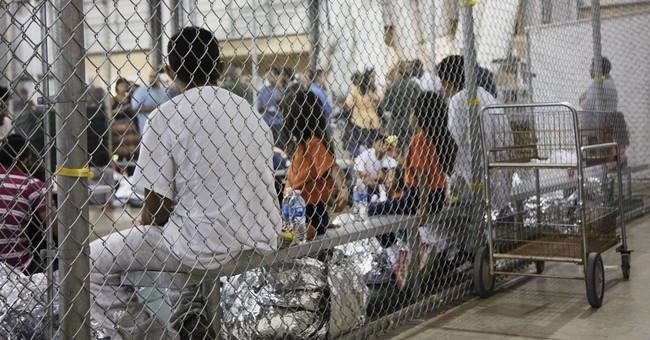This is the land of opportunity, and anyone who wants the come here can…legally. That’s not the issue. For the Trump White House, it’s been their stated position to shift our immigration policy toward allowing more high-skilled workers into this country.
As for the families of the low-skilled working immigration population in the country, 51 percent (76 percent counting immigrant-led households with children) are collecting some sort of check from our welfare services. Is that good? No. Does that mean we shut it all down? No. That figure comes from the Center for Immigration Studies, who noted the need for the immigration process to be more “selective.” At the same time, there are a lot of American households with children that are also getting some form of government assistance (via
USA Today):
About 51% of immigrant-led households receive at least one kind of welfare benefit, including Medicaid, food stamps, school lunches and housing assistance, compared to 30% for native-led households, according to the report from the Center for Immigration Studies, a group that advocates for lower levels of immigration.
Those numbers increase for households with children, with 76% of immigrant-led households receiving welfare, compared to 52% for the native-born.
The findings are sure to fuel debate on the presidential campaign trail as Republican candidates focus on changing the nation's immigration laws, from calls for mass deportations to ending birthright citizenship.
Steven Camarota, director of research at the center and author of the report, said that's a much-needed conversation to make the country's immigration system more "selective."
[…]
Linda Chavez agrees with Camarota that the country's welfare system is too large and too costly. But Chavez, a self-professed conservative who worked in President Reagan's administration, said it's irresponsible to say immigrants are taking advantage of the country's welfare system any more than native-born Americans.
[…]
Chavez, president of the Becoming American Institute, a conservative group that advocates for higher levels of legal immigration to reduce illegal immigration, said politicians should be careful about using the data.
[…]
"These kids who get subsidized school lunches today will go on to graduate high school ... will go on to college and move up to the middle class of America," Chavez said. "Every time we have a nativist backlash in our history, we forget that we see immigrants change very rapidly in the second generation."
Yet, as the publication noted, with most immigration waves, first generations are usually less-educated, poorer, and work low-skill jobs. It’s their children that break into the middle class. Both sides will use this to their respective talking points, though I think it’ll be best for the GOP to stay on message by promoting strong borders, enforcing our immigration laws, and making this about security. You have to secure the border first before any talk about reforming our welfare state can begin. And for the most part, this study doesn’t really deviate from past studies about immigrant households. Can there be room for reform? Yes. And our welfare state should be reformed to not engulf people in a pool of dependency, but rather a nice cushion that prevents them from crashing into the floor, but also catapults them back into the job market and back on track economically. In other words, it’s a temporary measure. Democrats have removed work requirements and asset tests, which has not fared well concerning accountability of these programs. Yet, that’s for another time.






No comments:
Post a Comment